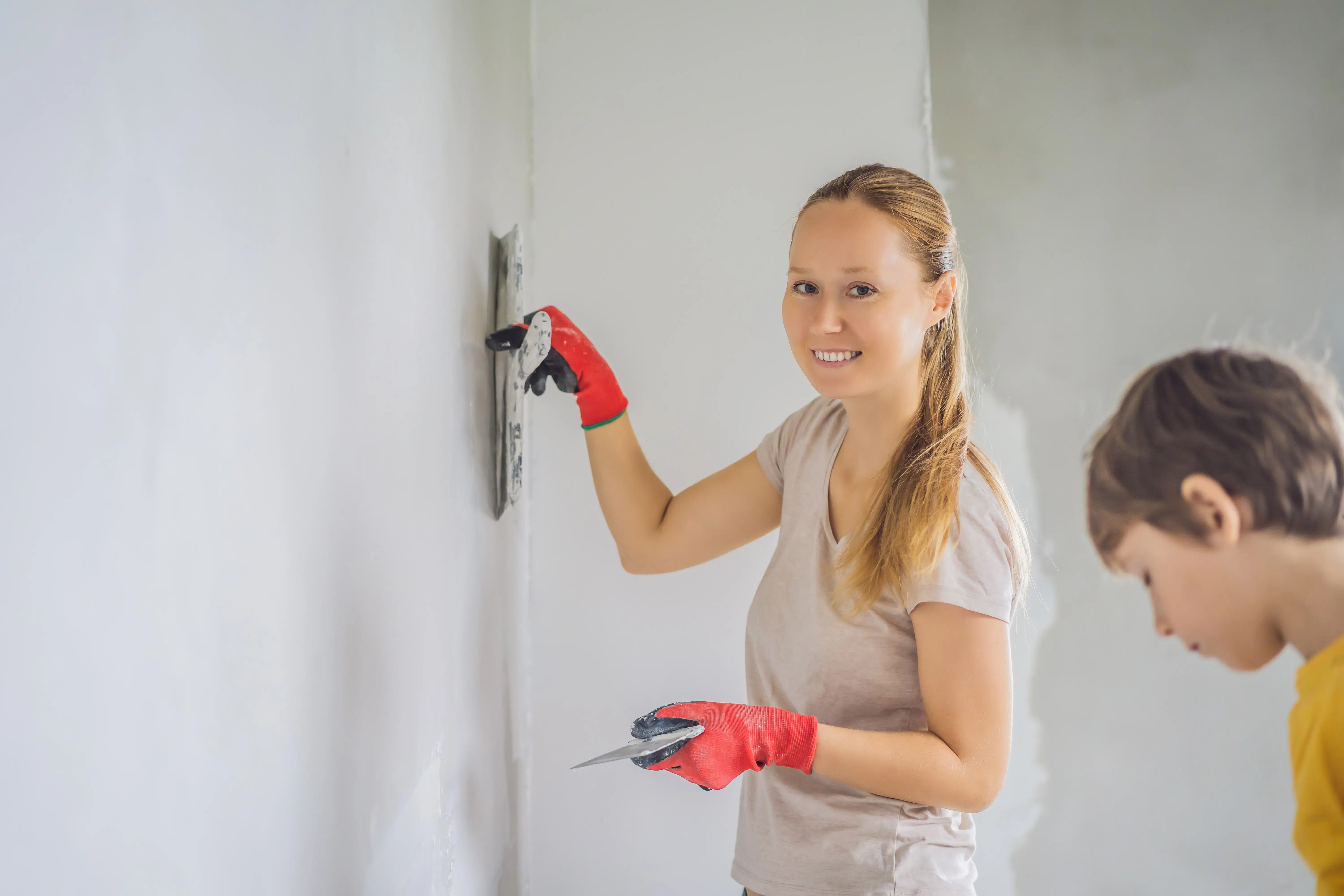Stucco is a building material made from Portland cement, sand, lime and water. It has been used for centuries to finish exterior walls, and is fairly easy to apply. Stucco can be used on almost any type of surface to create a textured look, and is often used to cover unattractive or damaged walls.
This material can even be applied over existing stucco to create a different texture or fresh look.
THINGS YOU WILL NEED
- Garden hose
- Spray nozzle
- Angle grinder
- Stucco bonding agent
- Paint brush
- Stucco mix
- Water
- Wheelbarrow
- Drill with paddle bit
- Trowel
- Plasterer’s rake
TIP: If you want to paint your stucco, wait at least three months for the stucco to dry completely. Though it may appear dry before that point, it does not become fully cured before at least 10 to 12 weeks. Painting stucco before it is dry can lead to mold growth or can cause the paint to chip or flake.
- Use an angle grinder to remove sharp edges or heavy points on the wall. Grind away “high” spots so that the wall is fairly even. As a general rule, no points on the existing wall should extend more than 1/4 inch past the shallowest voids in the stucco. This will prevent parts of the old stucco from sticking through the new application.
- Clean the wall using a garden hose with a spray nozzle. Start at the base of the wall and move up to remove dirt and grime. The spray nozzle will also exert a bit of pressure on the wall to wash away loose stucco and dust.
- Allow the wall to dry overnight, then apply a coat of concrete bonding agent. Paint the bonding agent on using a long-bristled brush, making sure to cover all voids and cracks in the wall. Bonding agent is used to keep moisture from the new stucco from soaking into the existing wall, which minimizes cracks and damage over time.
- Blend a pre-mixed stucco mixture with water according to the manufacturer’s instructions. Stir the mixture thoroughly using a drill with a paddle bit. Properly mixed stucco should form a thick paste, and should not be overly liquefied.
- Apply a 1/4-inch base coat of stucco to the wall using a trowel. Wait about an hour until the stucco begins to harden, then use a plasterer’s rake to scratch lines in the wall. These lines help to create a textured surface to which the final coat of stucco can adhere. Allow this coat to dry overnight.
- Mix a second batch of stucco using the procedure outlined in Step 4. Apply a final 1/4-inch coat of stucco, using your trowel to create the desired texture. By changing the angle and pressure of the trowel, you can greatly modify the stucco’s appearance. Experiment with different textures as you work to find the one you prefer.
STUCCO REMEDIATION FOR YOUR HOME
Don’t believe anything you see about mold not being a problem for your stucco home. If ignored, it can cause serious structural damage to your home, causing you to pay much more for repairs than if you get it taken care of right away. Luckily with stucco remediation, you can have mold removed and new stucco installed correctly.
Cracked Brick and Stucco Repair from CDP Stucco
CDP Stucco has repaired cracked stucco for homeowners throughout Florida. If you are unsure if the cracks indicate foundation failure, a representative from CDP Stucco can provide an inspection to give you back peace of mind.
Contact us today for an inspection of your cracked stucco repair! If you are interested in Stucco Installation or Stucco Repair, call the experts at CDP Stucco now at 850-259-2283

